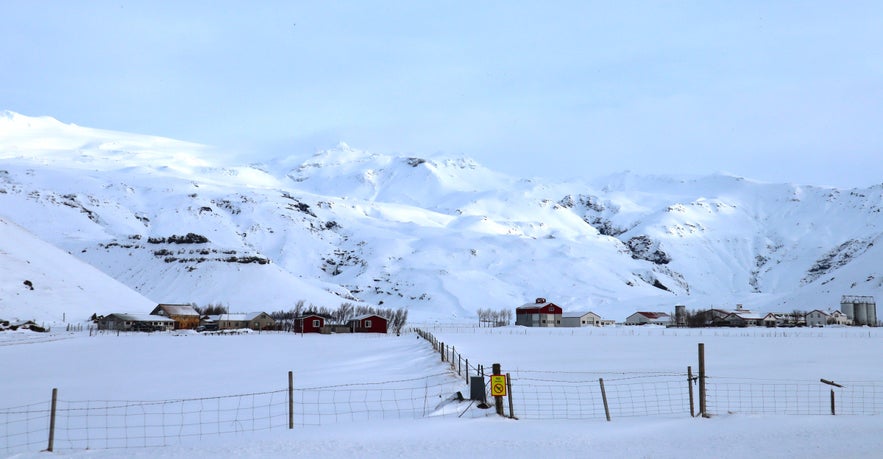
Eyjafjallajökull Travel Guide
The glacier volcano of Eyjafjallajökull is notorious the world over for causing havoc to air travel in 2010, and stumping television anchors everywhere as they tried to pronounce it. 1651 metres (5427 feet) tall, it is one of the most dominant features of the South Coast.
Eyjafjallajokull can be seen on many South Coast tours. This 6-Day Vacation Package and this 10-Day Summer Self-Drive are just two examples of the many tours that pass Eyjafjallajökull. Those who rent a car can travel South to see it independently.
Geography
 The glacier of Eyjafjallajökull is approximately 100 square kilometres (39 square miles), making it the country’s sixth largest. It sits close to the fourth greatest, Mýrdalsjökull, which also conceals another notorious volcano, this one called Katla.
The glacier of Eyjafjallajökull is approximately 100 square kilometres (39 square miles), making it the country’s sixth largest. It sits close to the fourth greatest, Mýrdalsjökull, which also conceals another notorious volcano, this one called Katla.
While Eyjafjallajökull’s eruption was huge and disruptive, it pales in comparison to the potential of Katla. Far more explosive, and under much thicker ice, an eruption here in unfavourable wind conditions could have worldwide consequences.
The magma chambers between both of these mighty volcanoes are connected, and, unfortunately for us, an eruption at Eyjafjallajökull is usually followed by one at Katla within a decade.
Eyjafjallajökull has many glacial outlets, the most famous being Gígjökull. Many rivers flow from its meltwater, and one of these falls into the beautiful South Coast waterfall, Seljalandsfoss, which it is possible to fully encircle.
Eruptions
Eyjafjallajökull’s most recent eruption was no doubt the most famous in Iceland’s history (although the honour really should go to Laki, the 1783-4 eruption of which caused an ash cloud so great that Europe fell into a famine that many historians believe led to the French Revolution). On March 27th, 2010, magma began to bubble from beneath the surface, and by April 14th, ash was starting to billow from the peak.
800 people were evacuated, in fears not of magma, but of equally dangerous glacial floods, which have decimated Icelandic towns in the past. Animals were ordered to be kept inside, and those with respiratory problems told they should also stay indoors.
Air travel across Europe was halted, as, by the evening of April 15th, the ash was already over the UK, Scandinavia, and parts of Germany. Holidaymakers were trapped, waiting for news, and would end up stuck for eight days; in Scotland and Ireland, there were even flights delayed in May due to lingering effects.
Thankfully, no one was injured, although the ash is thought to have caused respiratory issues for some in the south of the country. Many farms were also destroyed by the ash and floods, with some farmers still struggling to recover today.
Since settlement in 874, Eyjafjallajökull has also erupted in 900, 1612, and from 1821 to 1823. The latter released a huge amount of fluoride which is believed to have affected the bone health of humans and animals alike at the time.
Eyjafjallajokull today
Eyjafjallajökull is now entirely safe to visit and is seen on most tours of the South Coast in clear weather. In the town of Hvolsvöllur, there is a visitor’s centre on the volcano, which focuses on the experience of one family whose farm, Þorvaldseyri, was one of the many destroyed by the floods, lava and ash.
It is very unlikely that Eyjafjallajökull will erupt again any time soon, with hundreds of years between each eruption, but as mentioned, its neighbour Katla might start rumbling...
Attractions Nearby
Popular categories

Download Iceland’s biggest travel marketplace to your phone to manage your entire trip in one place
Scan this QR code with your phone camera and press the link that appears to add Iceland’s biggest travel marketplace into your pocket. Enter your phone number or email address to receive an SMS or email with the download link.

















